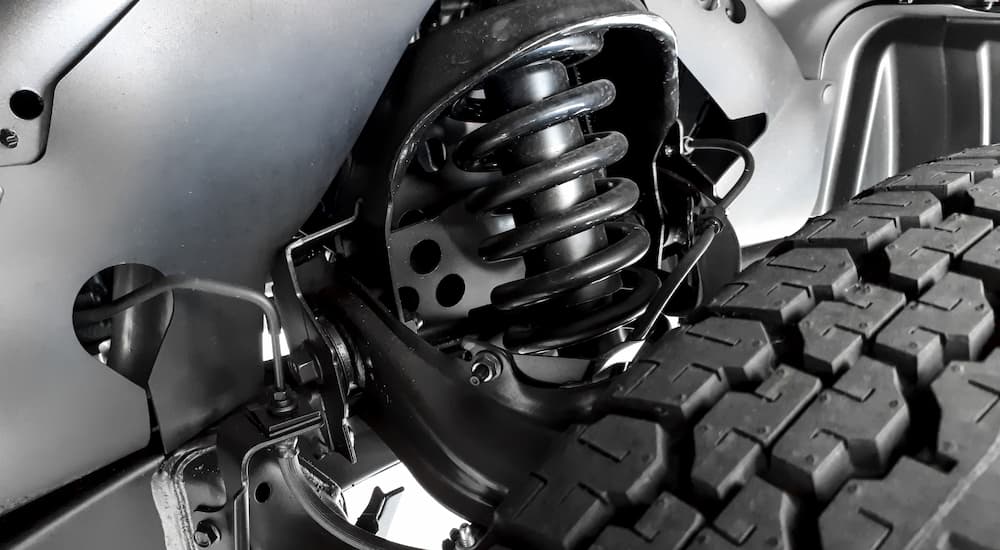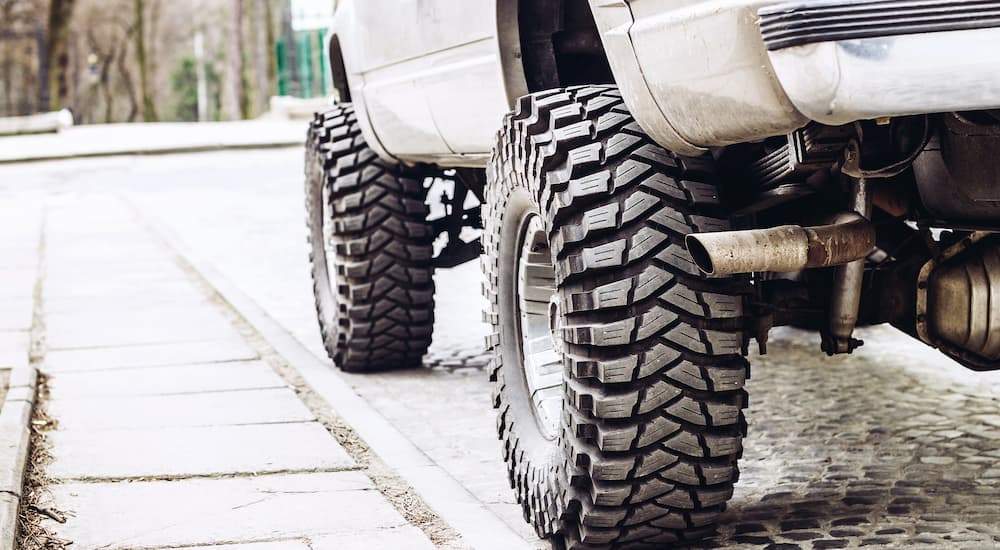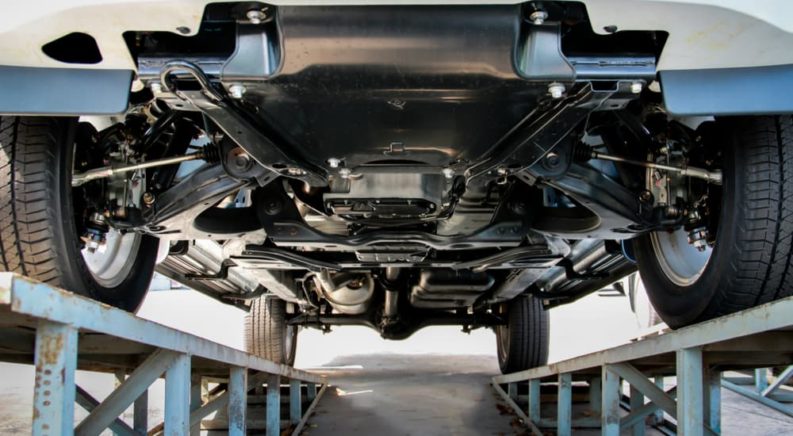A lift kit may just be the most popular truck modification around, possibly even beating larger wheels and tires. However, not all lift kits are created equal. If you didn’t buy your vehicle directly from a lifted truck dealer and are instead installing a lift kit yourself, then you will want to pay close attention to how lift kits can affect the suspension of your truck. If you simply add some spring spacers or opt for a body lift, then you won’t have to worry too much about inadvertently altering your suspension geometry. But if you are looking for a serious suspension lift, then this is an important consideration.
What Comes In a Lift Kit?
If you buy a complete lift kit from a reputable dealer, then you will notice that it includes a lot more than just some spring spacers. If it didn’t, then you would risk seriously changing your vehicle’s handling. A poorly designed lift kit can make your vehicle difficult to steer, uncomfortable to ride in, and could even cause damage to your truck’s powertrain. This is because the suspension is one of the most complex parts of your vehicle, carefully engineered to respond to changes in the road while keeping your truck stable and smooth riding. Any major changes to one part of your suspension must be accompanied by other changes to the rest of the suspension.
How much needs to be changed will generally depend on the height of the lift kit. A simple 1” lift, for instance, will often require nothing more than some spring spacers. Although there will still technically be some negative effects to your suspension, they will be so small that they are not worth worrying about. After all, a truck suspension is designed to have a good amount of articulation, and small changes to suspension geometry will be inside its normal range of motion. However, larger lifts are a different story.
Once you get into 2” lifts or so, the next part that will need to be modified are the shocks. Lifting a truck means that longer shocks are needed to provide the same damping rate and range of motion for your suspension. Sticking with the factory shocks will change the damping rate and can affect ride comfort and handling. In more extreme cases, the stock shocks may not be able to extend enough to allow a full range of motion, limiting your suspension’s ability to handle rough terrain.
For 3” lifts and up, even more parts will be required. In addition to extending the springs and shocks, you will likely need to replace parts like the control arms, steering knuckles, and stabilizer bars. Depending on the model and the height of the lift, you may even need to relocate or replace non-suspension items, such as brake lines and steering components, to ensure that everything can move freely through the full range of motion. There is a lot that goes into a good lift, which is why it is always a good idea to buy a complete kit designed for the vehicle rather than trying to piece one together yourself.

How Lift Kits Can Change Handling
Properly designed lift kits will have little effect on handling and ride quality beyond the obvious effects of driving a taller vehicle with a higher center of gravity. However, a badly designed or incomplete suspension lift can change the handling of your truck considerably. If your lift kit didn’t replace the stock shocks, then expect a rough ride on uneven surfaces. Having the wrong shocks for your lift can result in either jarring impacts or a bouncy ride. Suspension geometry problems with taller lifts can be more subtle but more dangerous. When it comes to handling, failing to replace components like control arms can make it impossible to get the wheels on your truck aligned to factory standards.
Other steering issues from an incomplete lift kit can be even worse. The original steering components may no longer be properly aligned with the rest of the suspension, creating additional problems with the steering. One particularly bad manifestation of this is “bump steer,” a phenomenon where suspension movement (such as when hitting a bump in the road) changes the vehicle’s direction. This is an incredibly dangerous situation that commonly results when the track bar and drag link are no longer parallel and requires modifications to the pitman arm to correct.
Another particularly severe handling issue that lifted Jeeps are known for is the dreaded “death wobble.” While there are a multitude of possible causes for this problem, including just general wear and tear, one of the most common is a poorly designed lift kit. Of course, the two problems are not unrelated. A bad lift kit can put extra strain on your suspension and steering components, leading to excessive wear and premature failure. This is a major reason why you should stick with a full kit from a reputable dealer, as it will replace all the necessary suspension components to keep your truck reliable and easy to handle.

Maintaining a Lift Kit
Any modifications made to a vehicle will usually reduce reliability, and lift kits are no exception to this rule. Your truck was originally designed for a specific suspension geometry, and modifying this geometry can result in unforeseen consequences. Good lift kits have extensive engineering of their own and will not display any major safety or reliability issues. However, even the best lift kits do not undergo the same level of testing that manufacturers put new vehicles through. This isn’t a reason to avoid lifting your truck, but it does mean that you should spend a bit more time making sure that all the suspension components are functioning properly.
While it may seem backward, you should focus more on the parts that you haven’t replaced than the parts that came with your lift kit. All the parts in a good lift kit were designed to work together and shouldn’t have any major issues as long as they were installed properly. However, the stock parts might be unable to keep up with the added stress placed on them by the lift. Tie rods, ball joints, and other moving suspension and steering components, in particular, should be inspected regularly for wear to make sure your lifted truck lasts for a long time.
Suspension Geometry Is as Important as Height
Lifting a truck is a great way to get some added ground clearance and make space for some larger wheels and tires. However, the suspension does far more than simply hold your truck off the ground. Ride quality, articulation, and steering are important functions of your vehicle’s suspension, and a lift kit has to be designed to take all these factors into account. Fortunately, there are plenty of good lift kits out there designed by reputable companies. There is even a growing number of factory-approved lift kits that are available straight from the dealership and come with warranties. So while there is a lot to consider when it comes to lifting your truck, it has never been easier to get a quality lift kit that provides the performance you are looking for without sacrificing your truck’s ride quality, handling, or reliability.

